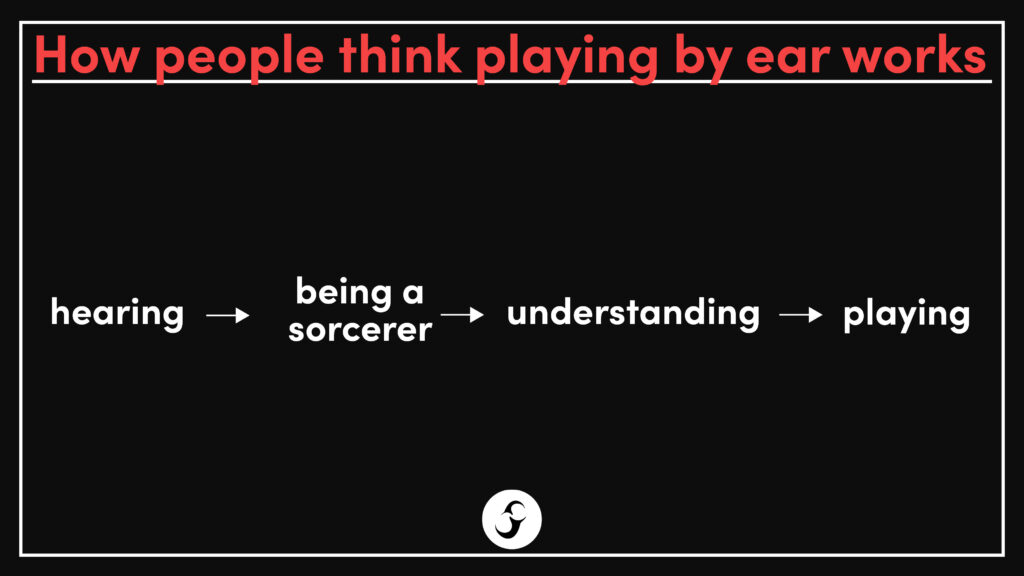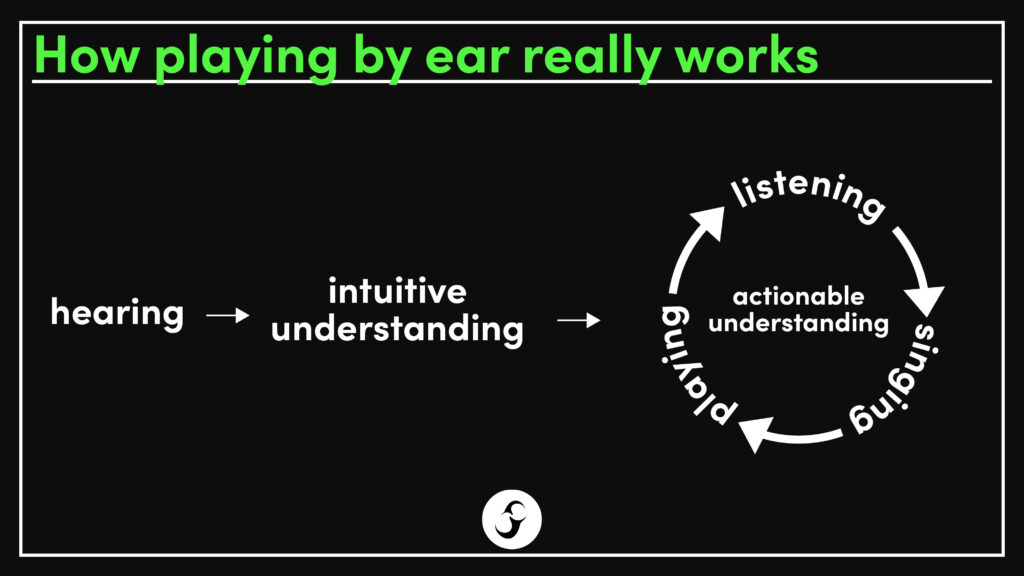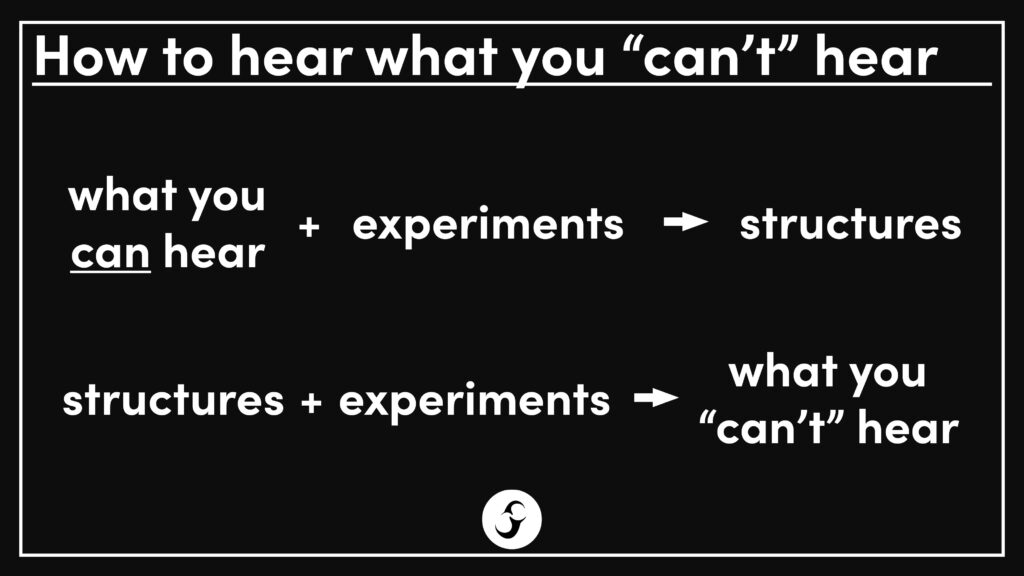This is a blog post adaptation of the following video:
This video is part of a series called Isn’t Music Theory, where I share some of my ideas about music and how we learn it. I’ve adapted and/or commented on the video for this post. If you’re interested, check out the whole series on the Midnight Oil Collective YouTube channel.
A lot of people think of playing by ear as something magical. I certainly used to–my ability to play by ear was almost nonexistent until into my adulthood. I think we thought it went something like this:

The thing that makes this seem so impossible is that most of us aren’t sorcerers. So in this mental model, the whole process is cut off at the pass.
What I’ve learned in the last decade or so is that the process works more like this, at least for me:

This cycle of listening, singing, and playing, involves a process of forming and testing hypotheses, and the more we practice this cycle, the more we can “skip” some of the steps by doing them in our heads.
Here’s a breakdown of what that process looks like:

- play it in different keys
- memorize it easily
- improvise over it, and
- learn from it.
In this video, I listen to Tate McRae’s song “Slower” for the first time and, in realtime, take you through the process of how I work from what I can hear to what I “can’t.”


